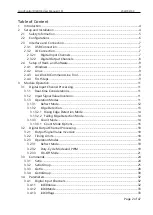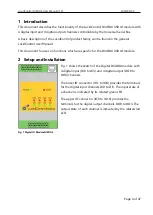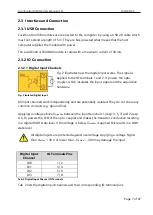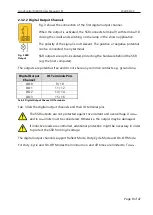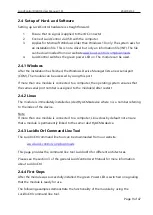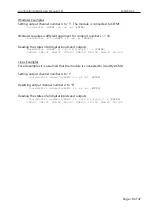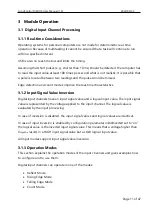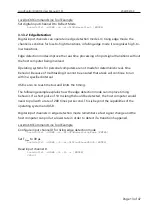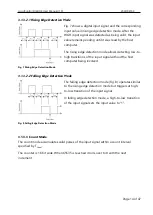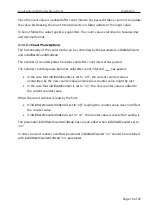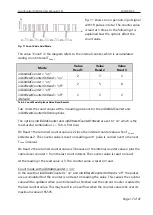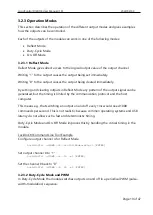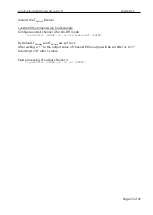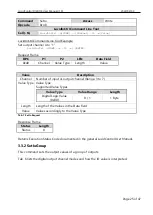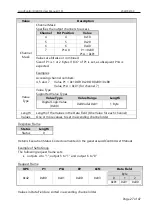
LucidControl DI4DO4, User Manual (1.0)
2022/02/03
Page 12 of 47
Fig. 4 Digital Input Channel Processing
in Reflect Mode
In all modes the input values are captured and evaluated after a stable signal has been
detected.
3.1.3.1
Reflect Mode
The reflect mode acquires the logical input value.
Fig. 4 illustrates the processing of the digital input
channels in reflect mode.
After the rising edge of the input signal was detected
and it remained stable for the interval T
Scan
the input
value is updated.
In the case that a pulse of the input signal is shorter than
T
Scan
, it is ignored and the input value does not change.
Fig. 5 shows this at the first pulse. The rising edge of the
input signal starts the scan timer and the falling edge
stops it (indicated by the gray T
Scan
interval).
The second pulse is longer than T
Scan
and considered
valid. The input value is updated.
Filtering digital signals can be used in order to surpress instable signals (debouncing). It
makes the detection of digital input signals more relyable.
The scan interval T
Scan
is configured by the parameter
inDi0ScanTime
(
→
0).
Fig. 6 illustrates the digital input signal and the inverted
input value with configuration parameter
inDi0Inverted
set to “on”.
Fig. 5 Reflect Mode Pulse Width
Fig. 6 Inverted Reflect Mode


